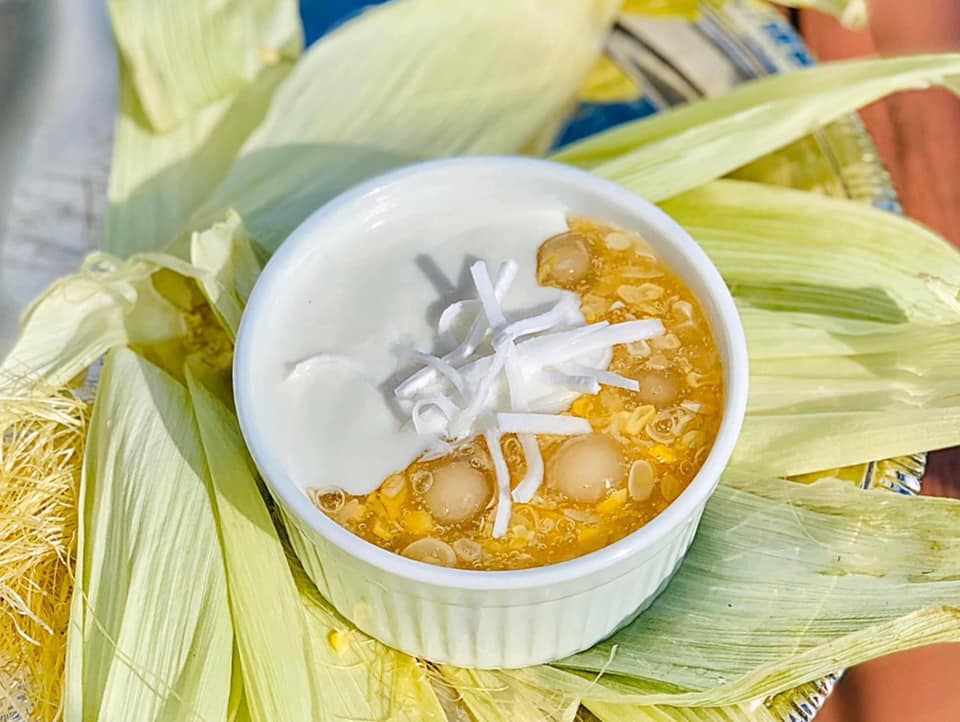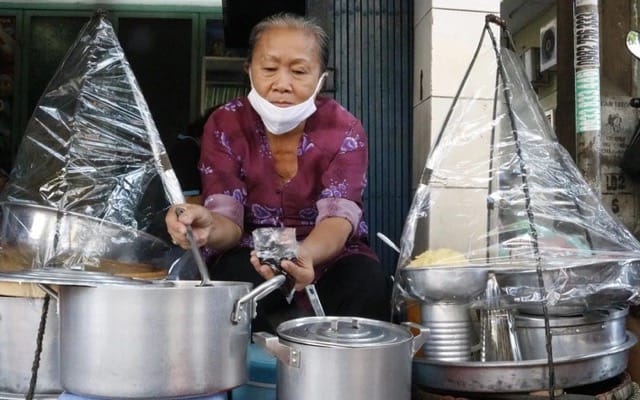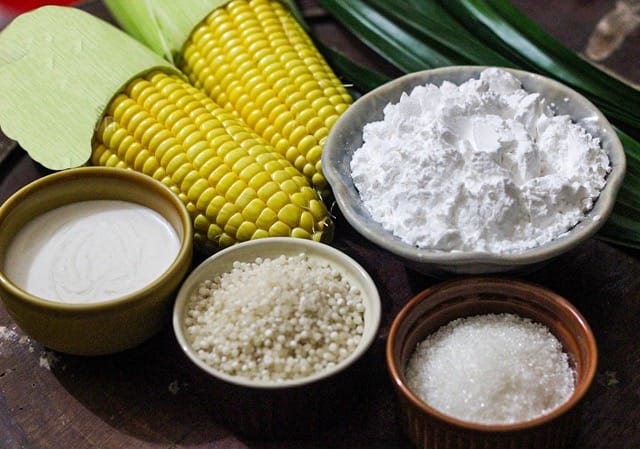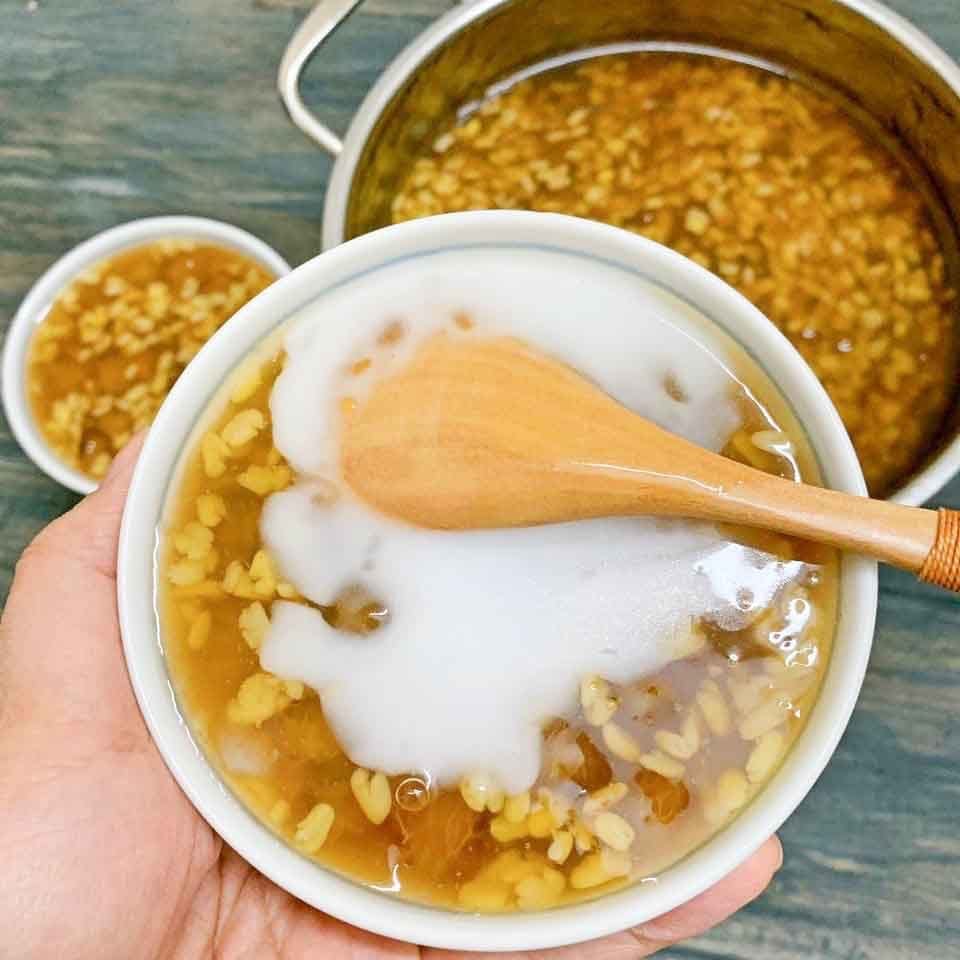Embark on a delectable journey through Vietnamese flavors with “Chè Bắp.” This sweet sensation, a culinary gem, weaves a tapestry of unique tastes. Join us in exploring the charm of “Chè Bắp” and uncovering where to experience this delightful treat amidst Vietnam’s lively streets.
See more: Explore Vietnamese cuisine.
Contents
What is Chè Bắp?
“Chè Bắp” is a beloved Vietnamese dessert celebrated for its intricate blend of flavors and textures. The heart of this delicacy lies in its velvety consistency, achieved through a meticulous combination of sweet corn and coconut milk, harmoniously sweetened.
Often recognized by its aromatic allure, “Chè Bắp” encapsulates the essence of Vietnamese culinary artistry, providing a unique and delightful experience that reflects the country’s rich gastronomic heritage. Whether enjoyed at local eateries, street vendors, or markets, each spoonful of “Chè Bắp” is a journey into the vibrant tapestry of Vietnamese sweets.

Discovering Chè Bắp in Vietnam
Let’s dive into the heart of Vietnamese sweetness with “Chè Bắp” – a treat that’s like a warm hug for your taste buds. In this section, we’re going to explore where and how to enjoy this delightful dessert in Vietnam, making your foodie adventure as sweet as can be!
Street Vendors: Where Sweet Dreams Come True
Imagine wandering through lively Vietnamese streets, guided by the inviting aroma of “Chè Bắp.” Keep an eye out for those cute “chè” signs – they’re like little secrets leading you to local eateries and street vendors crafting this sweet delight. It’s not just about the food; it’s a vibe – an authentic, street-side experience that’s as delicious as it is charming.
Market Marvels: A Sweet Wonderland
Now, let’s step into the bustling markets – a vibrant playground of flavors. Here, friendly vendors welcome you to a world of sweet wonders, and right in the spotlight is “Chè Bắp.” It’s not just a dessert; it’s an adventure! Each stall offers a unique take on this classic, from traditional recipes to creative twists. And guess what? The prices are just as friendly as the vendors, making it a budget-friendly joy ride through sweet surprises.
Discover the Rich Tapestry of Vietnamese Cuisine Through Buffet in Vietnam.

Crafting Chè Bắp at Home
Delving into the heart of Vietnamese sweetness, our journey through “Chè Bắp” wouldn’t be complete without exploring the art of bringing this delightful dessert to your own kitchen. In this segment, we’ll unravel the secrets of creating “Chè Bắp” at home, ensuring an authentic and satisfying culinary experience.
Ingredients:
- 5 corns.
- A bunch of pandan leaves
- 300g clean green beans
- 300 ml coconut milk
- 2 spoons of tapioca starch
- 150g white sugar

Instructions:
Step 1: Preparing Corn and Pandan Infusion
- Peel the corn, remove the beard, and wash. Use a thin knife to remove the kernels, keeping the core
- Wash the pandan leaves, removing the yellow parts, and tie them into a bundle.
- Boil the corn cob and pandan leaves in a pot of water to extract a sweet and fragrant taste. Drain the water and discard the residue.

Step 2: Cooking Green Beans and Corn
- Place green beans and split corn into the pot.
- Add corn water and pandan leaves, simmering over low heat to prevent excessive foaming.
- Stir well during cooking to avoid sticking. When beans and corn are tender, add white sugar.
Step 3: Thickening the Soup
- Mix cassava flour with filtered water to dilute.
- Slowly pour the cassava flour mixture into the pot, stirring gently for even blending.
- Cook for an additional 3-5 minutes, then turn off the stove.
Step 4: Serving
- Scoop the sweet soup into a glass or bowl.
- Pour in coconut milk.
- Serve hot or add ice if you prefer a cold version. Enjoy your homemade Corn Sweet Soup
Don’t Forget to Savor Top 9 Drinks in Vietnam.

Enhancing Your Chè Bắp Technique
Digging into the intricacies of crafting “chè bắp,” let’s explore practical cooking tips to streamline your experience with this Vietnamese dessert. These straightforward insights are designed to refine your preparation and ensure a satisfying outcome.
- Adapting with Canned Corn: Swap fresh corn for canned corn in the “chè bắp” recipe for a time-saving twist. Note, while the sweetness may differ slightly, the convenience is unmatched. Experiment to find the right balance for your palate, embracing the efficiency of canned corn without compromising too much on flavor nuances.
- Corn Selection: The choice of sweet corn significantly impacts “chè bắp” flavor. Fresh, high-quality corn is ideal for a traditional approach. Alternatively, canned sweet corn without extra salt or sugar can be a convenient choice. The aim is to preserve the natural sweetness that characterizes this dessert.
- Coconut Cream Harmony: Achieving the right coconut flavor and consistency is crucial. Experiment with various coconut milk or cream brands to find your preferred balance. Whether favoring the richness of coconut cream or a lighter touch with coconut milk, adjust according to your taste for desired creaminess and sweetness.
- Glutinous Rice Handling: Glutinous rice defines “chè bắp,” known for its sticky texture. Thoroughly rinse the rice to remove excess starch, avoiding an overly sticky consistency. Maintain a balanced rice-water ratio when cooking to achieve the desired pudding-like texture, finding the right compromise between softness and chewiness.
- Pudding Consistency: Optimal pudding consistency is achieved through a gentle simmering approach. Allow sweet corn and glutinous rice to meld slowly, ensuring flavors are absorbed without rushing. This patient method yields a velvety and indulgent pudding.
- Creative Additions: Enhance your “chè bắp” experience with creative additions. A splash of pandan extract or experimenting with toppings like toasted coconut flakes or a drizzle of condensed milk can add subtle complexity to your dessert.
- Temperature Considerations: Serving temperature significantly influences “chè bắp” enjoyment. Some prefer the warmth of freshly prepared pudding, while others enjoy the contrast of chilled coconut cream against the warm base. Experiment with temperatures to find what suits your taste.
With All the Great Vegan Options in Vietnam, There’s No Reason Not to Explore the Wonderful World of Vegan Delights While You’re on Holiday.


Related Posts
Saigon’s “Flower Market Replica”: Where To Find Them
Ho Chi Minh City’s floral charm is not limited to its bustling wholesale markets. Imagine wandering through a place where vibrant petals, fragrant blooms, and the spirit of traditional Vietnamese markets come alive—without the overwhelming crowds. A flower market replica captures that magic, blending the beauty of fresh flowers with the charm of a curated, […]
Is it Safe to Travel to Vietnam Right Now? A Complete 2025 Guide
Vietnam has emerged as one of Southeast Asia’s most captivating destinations, drawing millions of visitors annually with its rich culture, stunning landscapes, and incredible cuisine. However, many travelers still ask: Is it safe to travel to Vietnam right now? This comprehensive guide provides you with everything you need to know about Vietnam travel safety in […]
Ho Chi Minh Cu Chi Tunnels Tour: The Ultimate Guide
The Cu Chi Tunnels stand as one of Vietnam’s most remarkable historical sites, offering visitors a profound glimpse into the ingenuity and resilience displayed during the Vietnam War. For travelers, a Ho Chi Minh Cu Chi tunnels tour represents an essential experience that combines education, adventure, and deep cultural understanding. This comprehensive guide will help […]